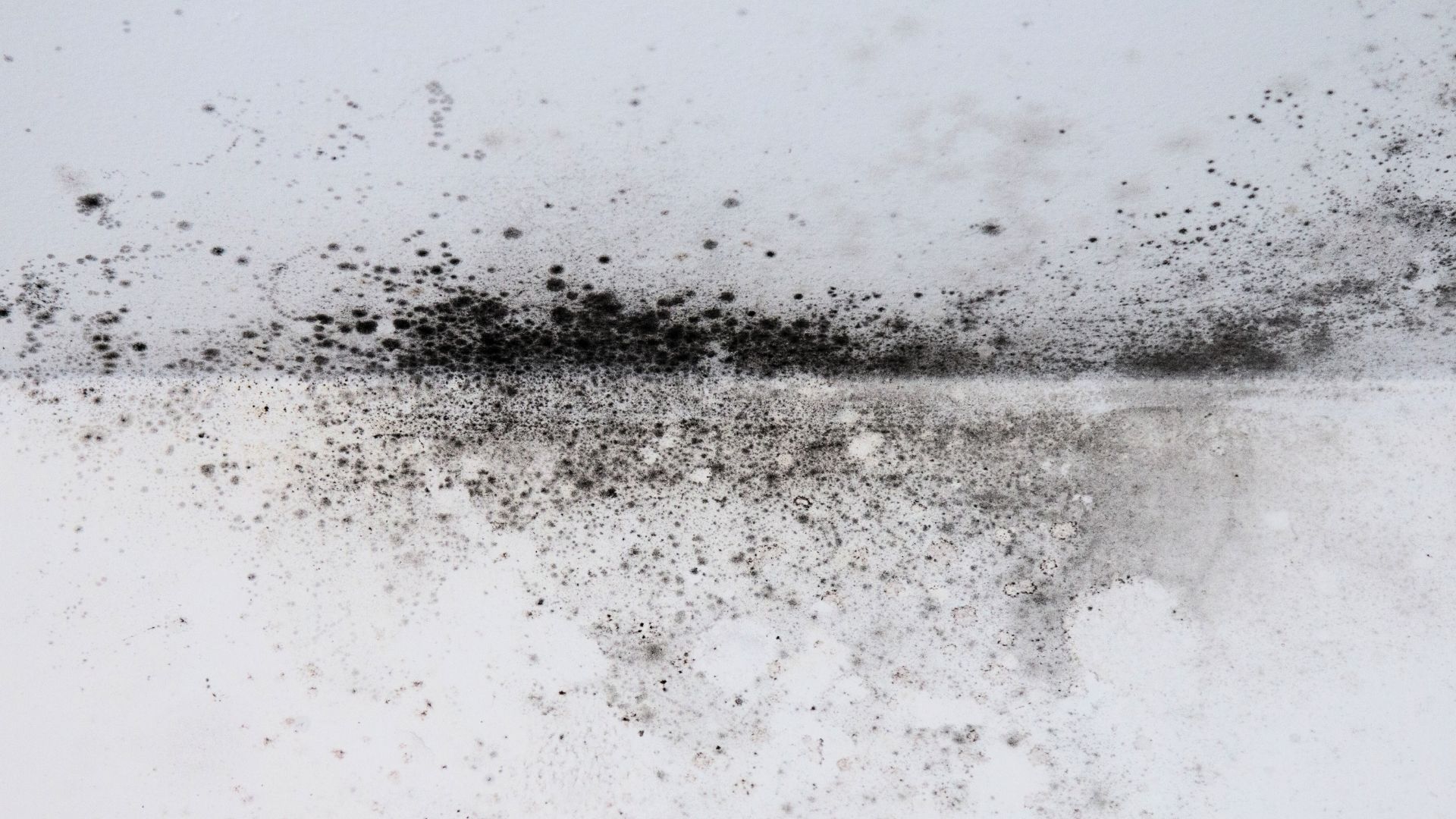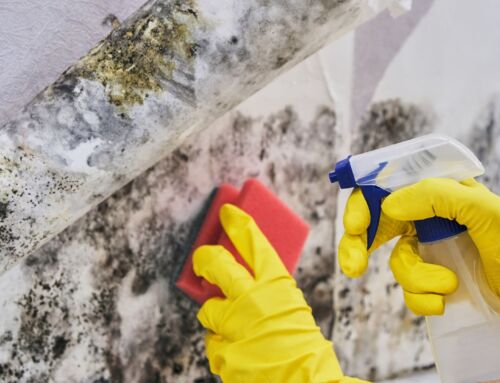Black mould, scientifically known as Stachybotrys chartarum, is a type of fungus that thrives in damp and humid environments, often found in places with water damage or high humidity. While the sight of mould growing on walls or ceilings may be enough to raise concern, the potential health risks posed by black mould exposure are even more alarming. The causes of black mould growth are typically linked to water damage, inadequate ventilation, and high moisture levels in indoor environments. When exposed to this harmful mould, individuals may experience various symptoms, which can range from mild to severe, depending on the length of exposure, individual susceptibility, and the extent of the mould growth.
Causes of Black Mould Growth
- Water Damage: One of the leading causes of black mould growth is water damage. Areas in a home or building that experience leaks from roofs, windows, or plumbing systems provide the perfect breeding ground for mould. When water accumulates and is not properly removed, it creates the damp conditions mould requires to grow. This is especially common in areas like basements, attics, bathrooms, and kitchens where water can easily leak or accumulate.
- High Humidity: Mould thrives in environments where moisture levels are consistently high. Poor ventilation in a room or building can contribute to high humidity levels, creating ideal conditions for mould growth. Activities such as cooking, showering, or drying clothes indoors can also increase humidity levels in a home. Over time, this can cause the development of black mould, especially in rooms without windows or those with inadequate airflow.
- Flooding: Natural disasters, such as heavy rain or floods, are another common cause of black mould. When an area experiences flooding, water can seep into walls, carpets, and furniture, leading to moisture retention that fosters mould growth. It is important to address the damage and dry out the affected areas as soon as possible to prevent mould from forming.
- Condensation: Condensation occurs when warm, moist air comes into contact with cool surfaces, such as windows, pipes, or walls. This creates water droplets, which, when left unchecked, can contribute to mould growth. In colder climates or during the winter months, condensation on windows or walls is more likely to occur, increasing the risk of black mould.
- Leaky Roofs and Plumbing: Small, persistent leaks in a roof or plumbing system can go unnoticed for extended periods, allowing moisture to build up behind walls or under floors. This hidden moisture, when combined with poor ventilation, creates the ideal environment for mould to grow undetected. Regular maintenance of roofing and plumbing is crucial to preventing this type of water damage.
- Lack of Ventilation: Proper ventilation is essential for controlling indoor humidity levels. Without it, moisture from daily activities has nowhere to escape, contributing to mould growth. For instance, bathrooms and kitchens without exhaust fans are particularly vulnerable to mould, as the steam and moisture from showers or cooking have nowhere to go.
Symptoms of Black Mould Exposure
Exposure to black mould can lead to a variety of symptoms, some of which may be subtle while others can cause significant health problems. The severity of symptoms often depends on the length and intensity of exposure, as well as the individual’s health status and sensitivity to mould.
Respiratory Symptoms
One of the most common effects of black mould exposure is respiratory irritation. Inhaling mould spores can cause the following symptoms:
- Coughing: Persistent coughing is a common symptom, particularly for individuals who already have respiratory conditions like asthma or bronchitis.
- Wheezing: The inhalation of mould spores can cause wheezing or difficulty breathing, especially in people with pre-existing lung conditions.
- Nasal Congestion: Mould exposure can lead to sinus congestion, making it difficult to breathe through the nose. This can be accompanied by sinus headaches and a runny nose.
- Shortness of Breath: Prolonged exposure to black mould may lead to shortness of breath, particularly for individuals with respiratory disorders.
Allergic Reactions
Many people are allergic to mould spores, and exposure to black mould can trigger allergic reactions. These symptoms may include:
- Sneezing: Individuals with mould allergies may experience frequent sneezing, especially when they are in an area with visible mould growth.
- Skin Rashes: Mould spores can cause skin irritation, leading to rashes or hives, particularly when individuals come into direct contact with mould-contaminated surfaces.
- Itchy Eyes: One of the most common allergic reactions to mould exposure is red, itchy, or watery eyes.
Fatigue and Headaches
Black mould exposure can cause chronic fatigue and headaches, making it difficult for individuals to focus or perform daily activities. The constant feeling of exhaustion can be debilitating and may worsen over time. Mould-related headaches are often described as dull or pressure-like, and may be accompanied by other symptoms such as dizziness.
Neurological Symptoms
In some cases, exposure to black mould can lead to neurological symptoms, particularly in individuals who are sensitive to mould toxins. These symptoms can include:
- Memory Problems: Mould exposure has been linked to cognitive issues, including difficulty concentrating or remembering things.
- Dizziness: People who have been exposed to black mould may experience dizziness, lightheadedness, or vertigo.
- Mood Changes: Some individuals may experience irritability, anxiety, or depression as a result of prolonged mould exposure.
Asthma and Other Respiratory Diseases
For individuals with asthma or other chronic respiratory conditions, exposure to black mould can trigger more severe symptoms. Mould exposure can increase the frequency and severity of asthma attacks, leading to increased use of inhalers or other medication. In some cases, exposure may also exacerbate conditions like chronic obstructive pulmonary disease (COPD).
Conclusion
Black mould is a serious health risk that can be caused by water damage, high humidity, poor ventilation, or flooding. If mould growth is detected in a building, it is important to address the source of moisture and seek professional mould remediation to prevent further growth. Symptoms of black mould exposure can vary, but common issues include respiratory problems, allergic reactions, fatigue, headaches, and neurological symptoms. If you suspect mould exposure, it is important to seek medical advice, particularly if you experience persistent symptoms or have a pre-existing respiratory condition. Maintaining proper ventilation, addressing water damage promptly, and conducting regular inspections are key to preventing black mould growth and protecting your health.
If you’re dealing with black mould in your home or need expert advice on how to prevent or tackle mould growth, reach out to us today. We’re dedicated to helping you create a safer, healthier, and more comfortable living space.





